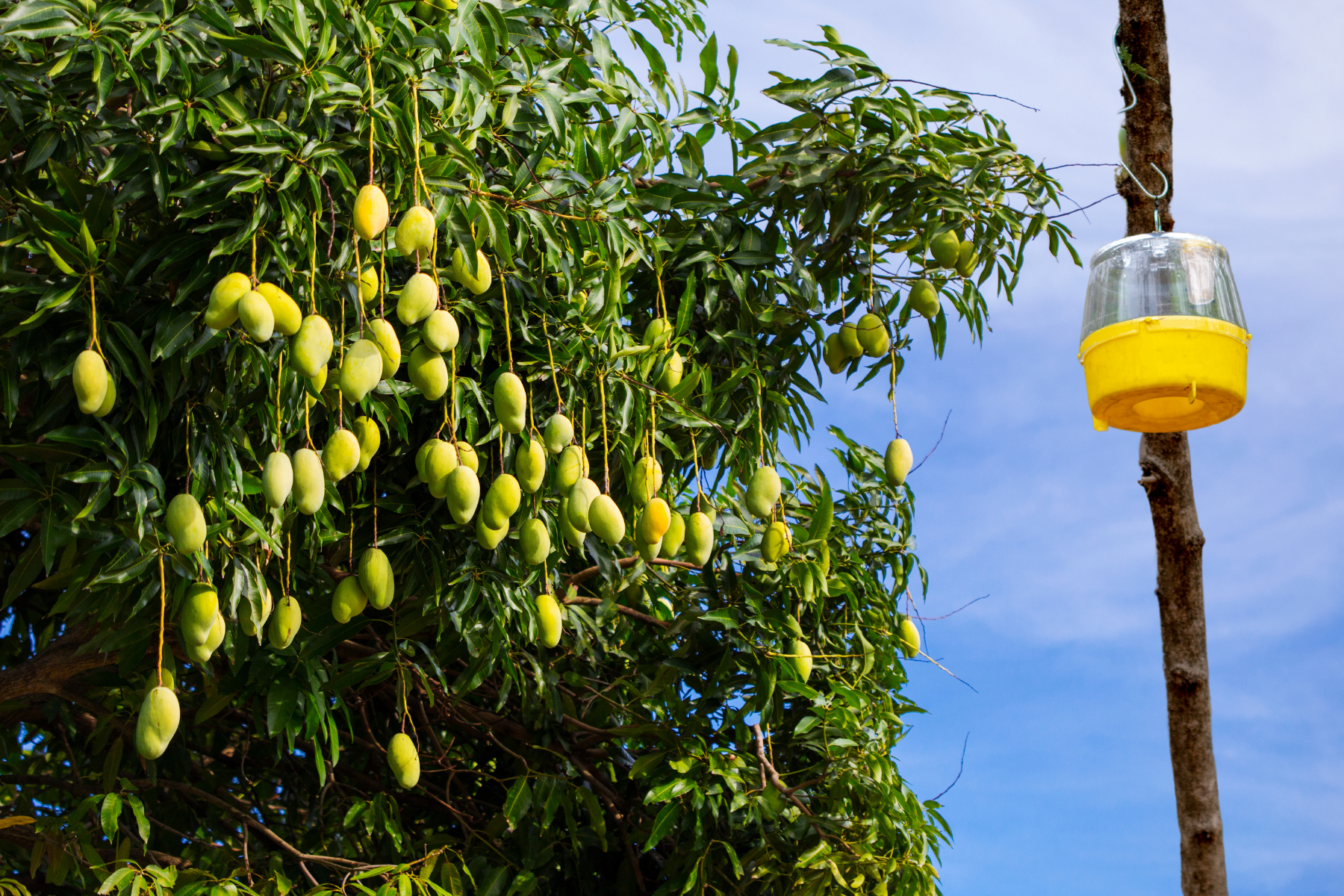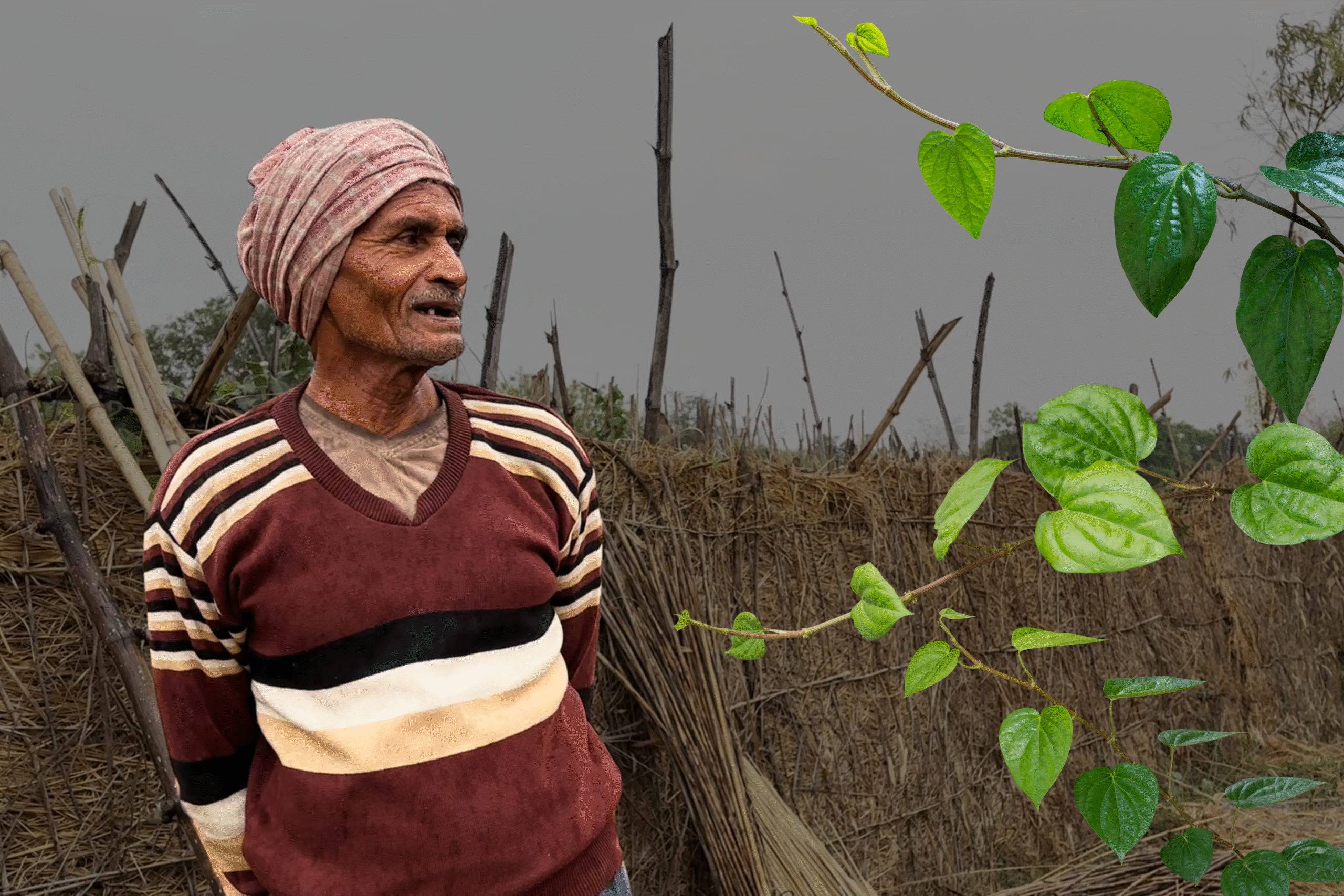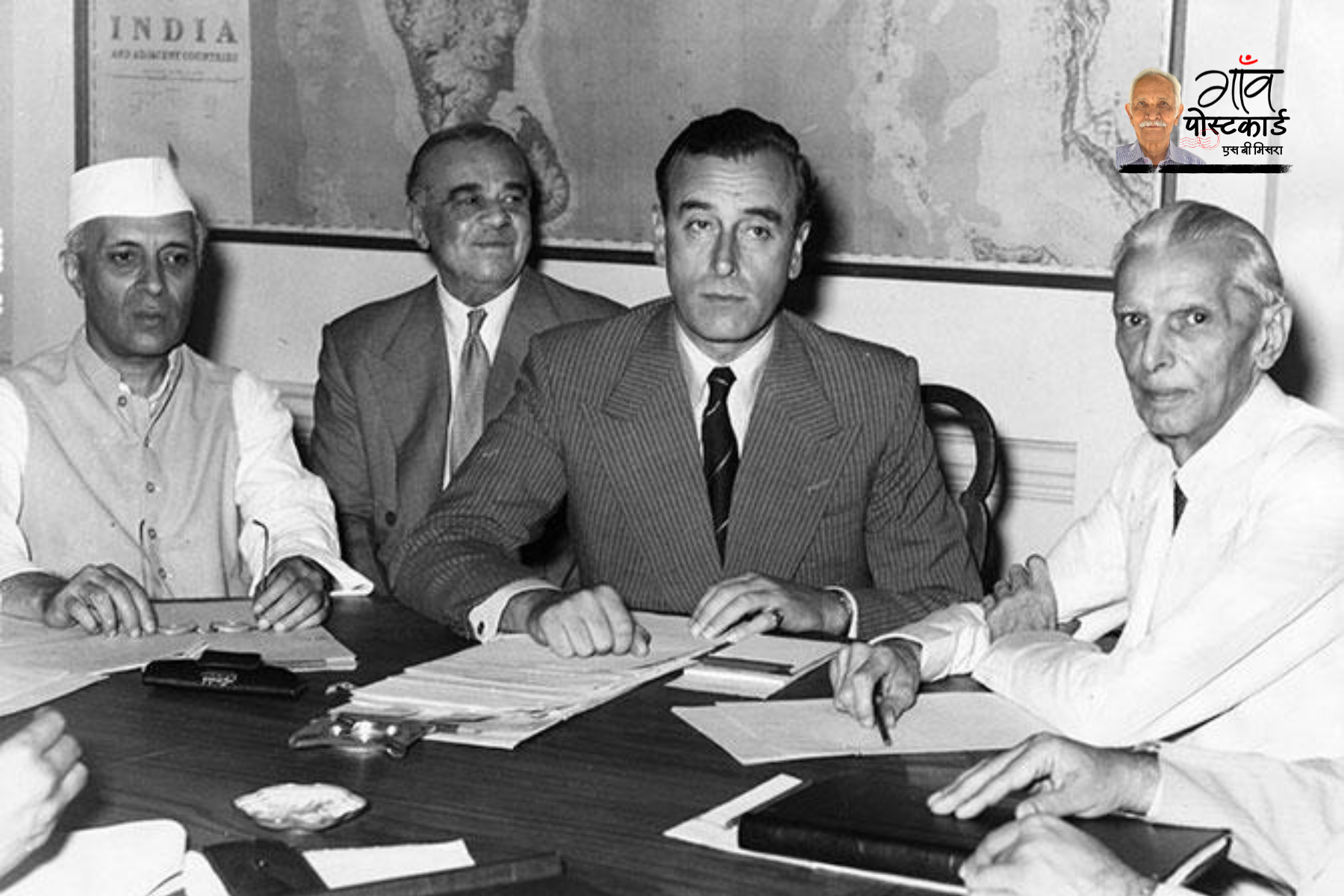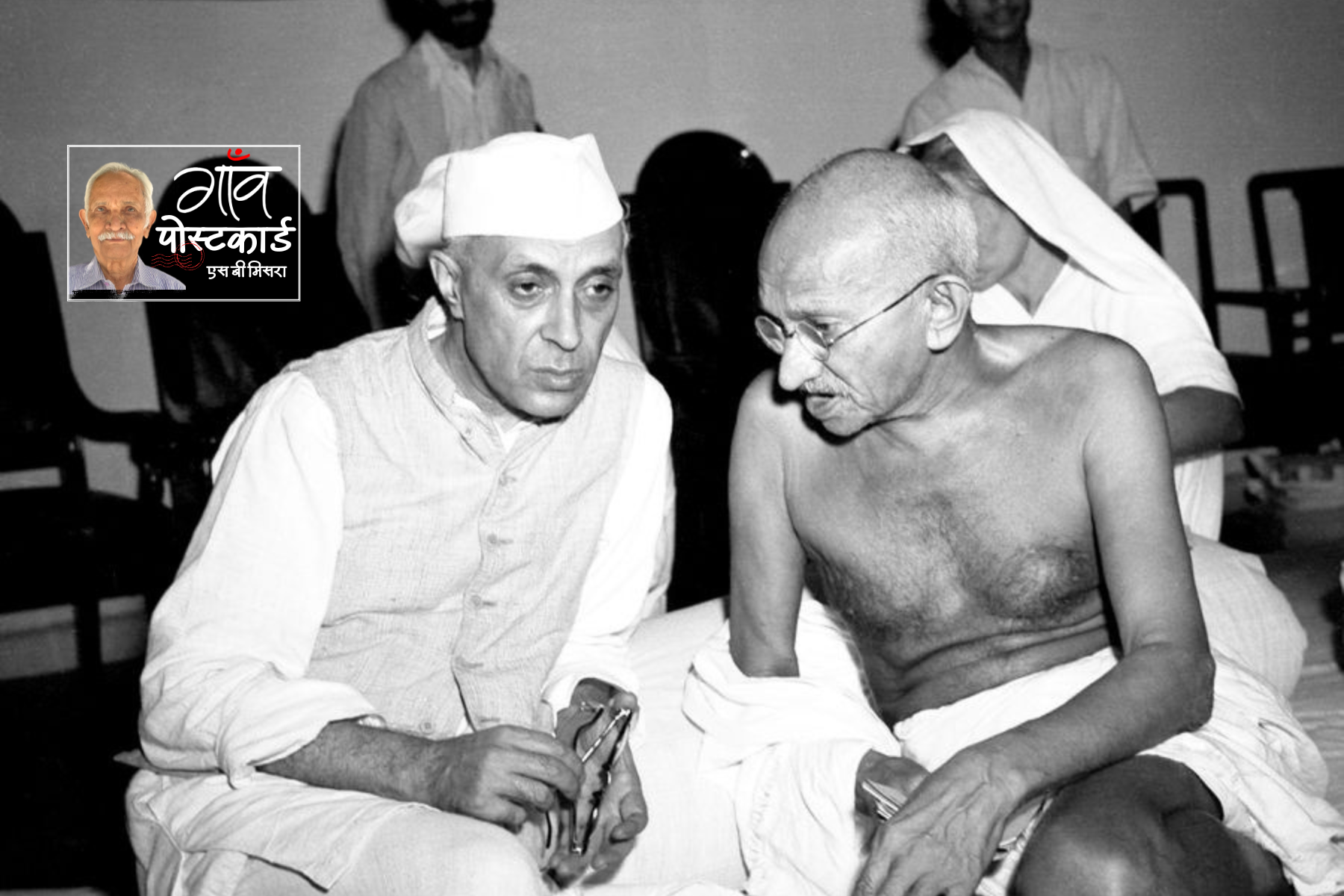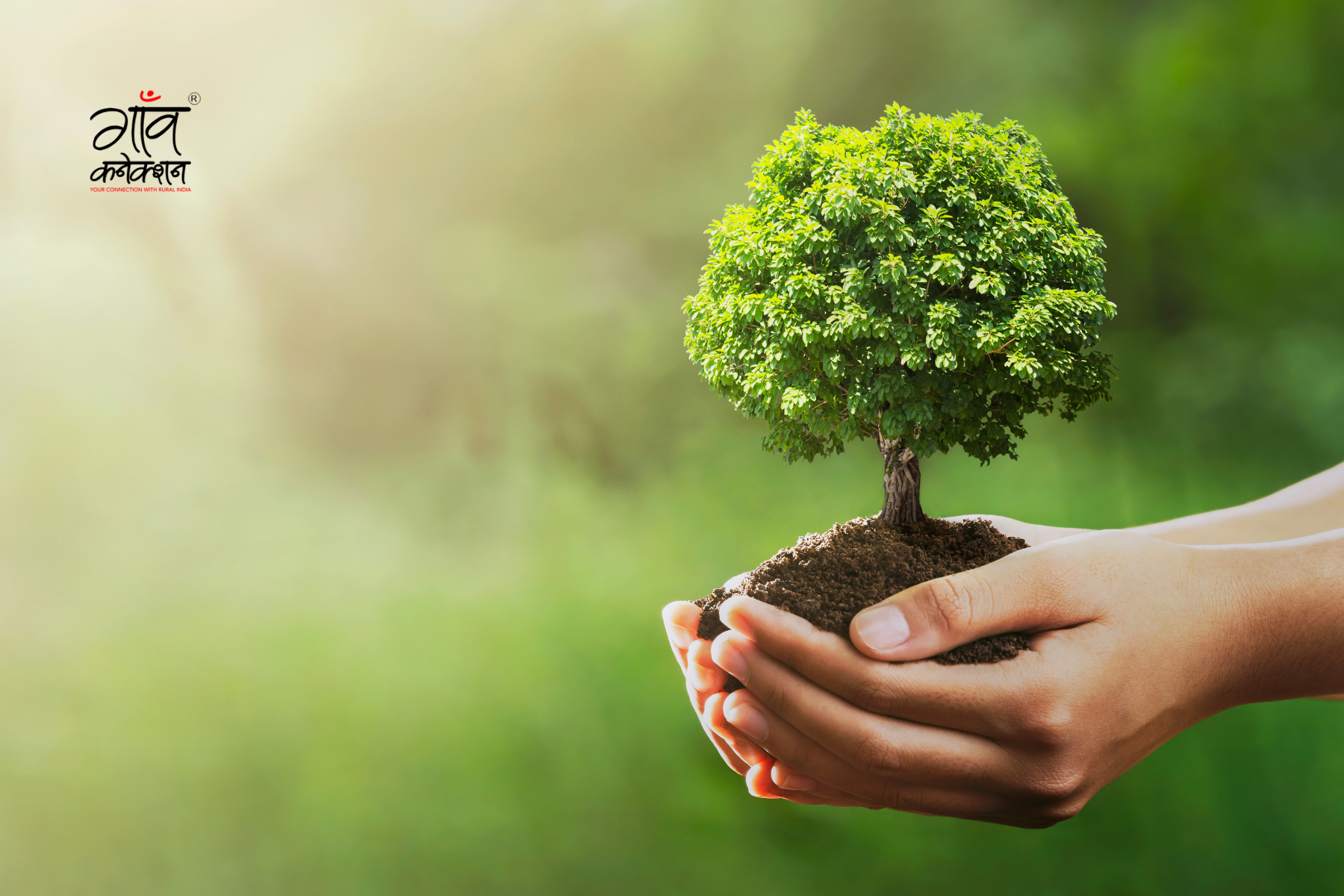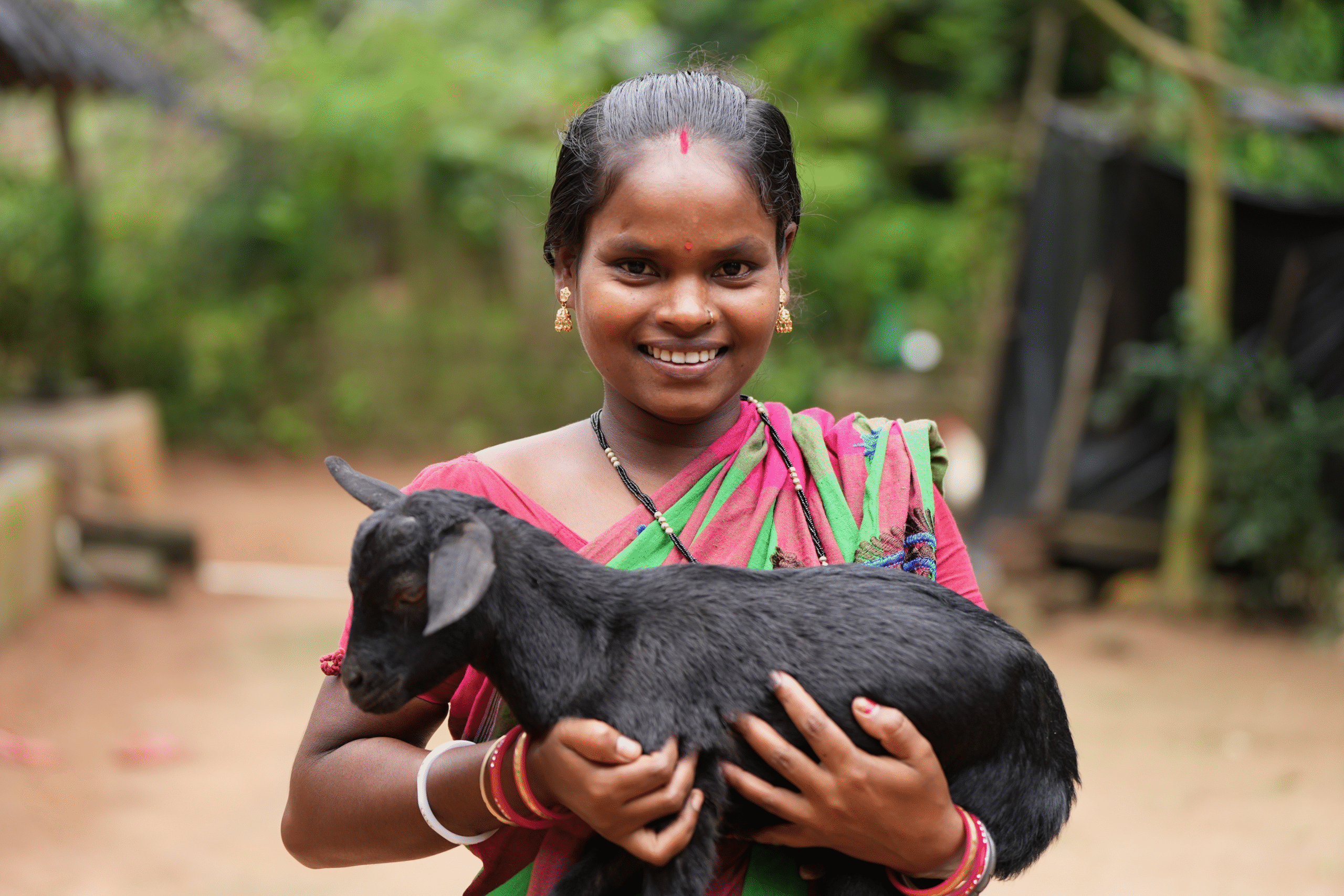Sugarcane production and processing is a vital source industry in Uttar Pradesh, especially in the western districts. According to the Sugar Industry & Cane Development Department of the state government, a total of 120 sugar mills operated in the state during the crushing season of 2021-22. The total sugarcane area in Uttar Pradesh is 276,000 hectares and sugarcane productivity is 823 quintals [100 kilogrammes] per hectare.
In this photo essay, Gaon Connection traces the journey of the sugarcane from the fields to the bhattas — the rudimentary factories which process the cane syrup into jaggery which is eventually refined into sugar.
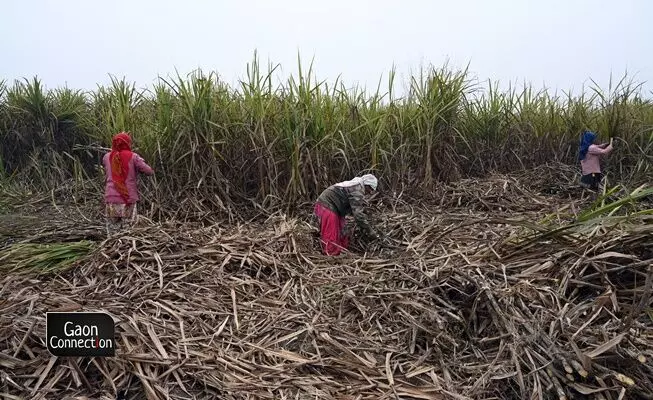
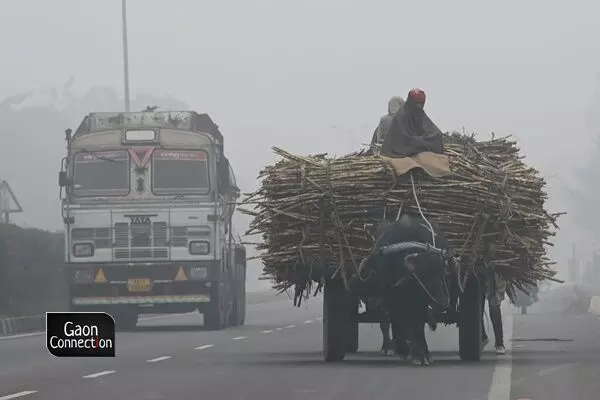
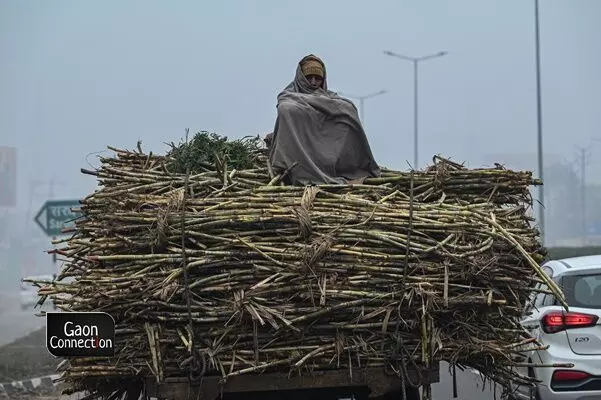
The urgency to transport harvest is such that farmers use any means at disposal, often using bullock carts or even buffalo-carts. The farmers brave frigid temperatures and sights of shawl-wrapped farmers transporting their sugarcane harvest are a common sight on the highways of western Uttar Pradesh during January-March.
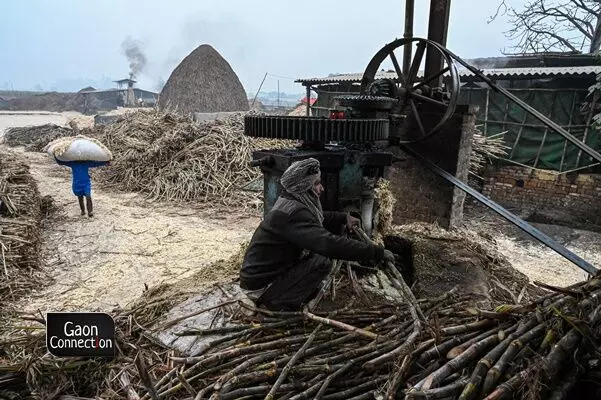
Scene of a juice extracting machine at a bhatta. Upon reaching the bhatta, the sugarcane harvest is weighed and prices are negotiated. The sugarcane is timely sent to crushers to extract the cane juice which is then processed to make jaggery.
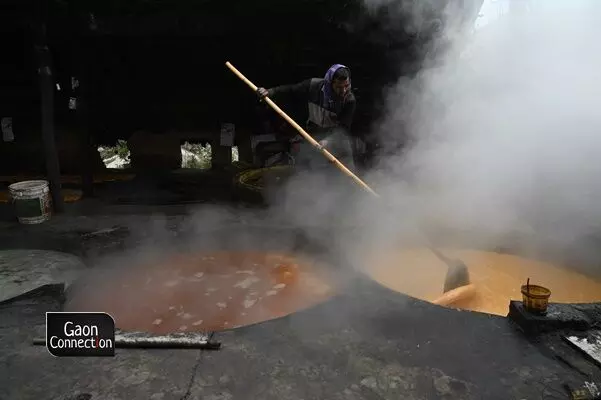
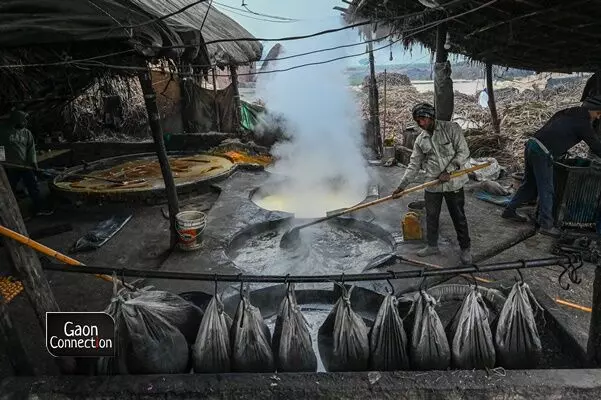
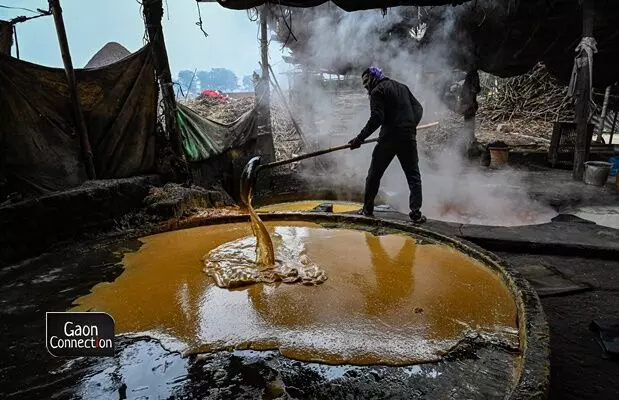
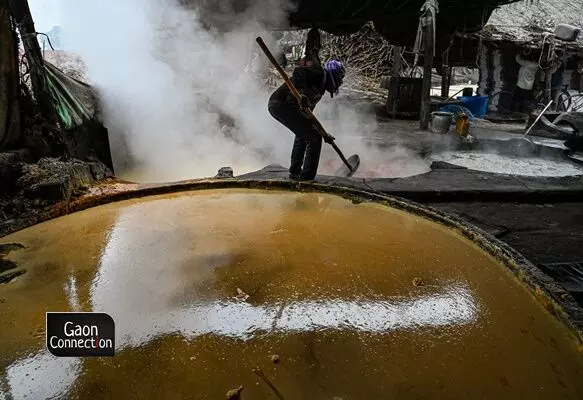
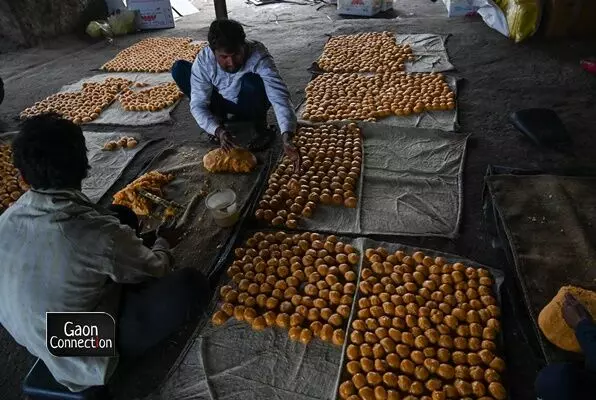
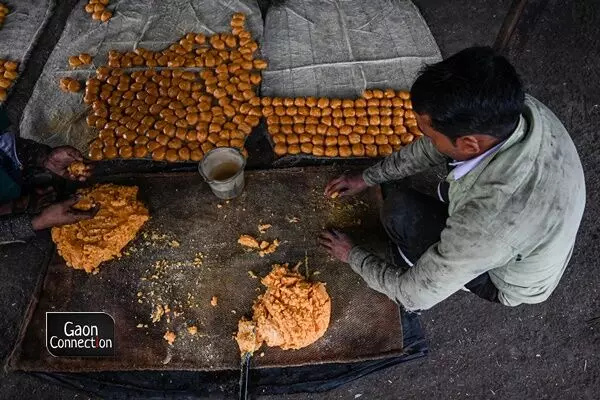
Jaggery is a natural sweetener and is an effective way to boost immunity, regulate body temperature, enrich the skin, improve digestion and also cure joint pain.


